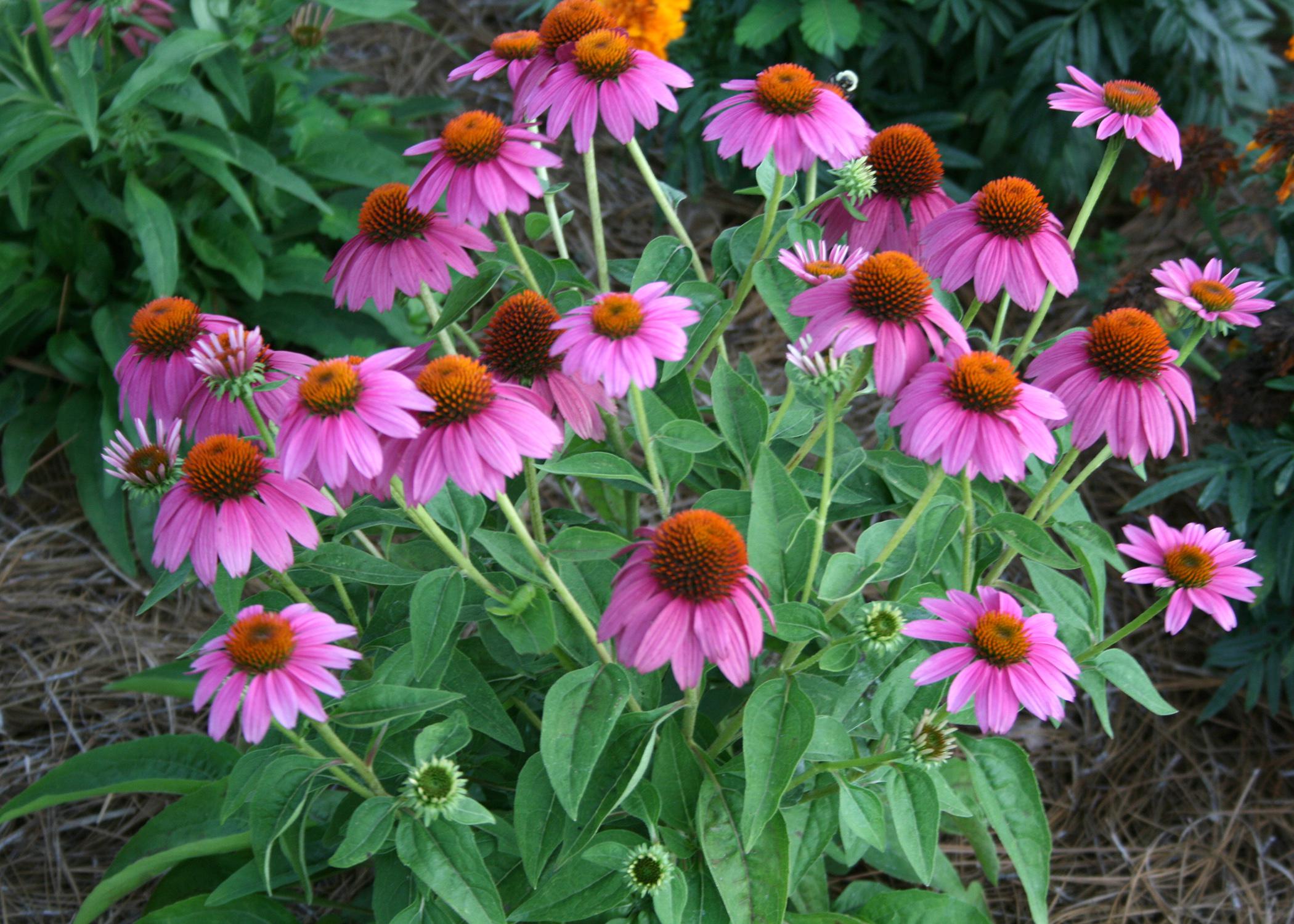

By removing 1 foot of each stem, you’ll achieve later flowering and more compact growth.
PURPLE CONEFLOWER PLANT SPACING FULL
Coneflowers thrive in full sun and well-drained soil. However, plants that grow from seed are not likely to bloom for two to three years.Ĭhoosing a location. Seeds can be started indoors 8-10 weeks before the last frost date and transplanted outside after that time or sown outdoors when soil temperatures have reached 65 F. Coneflowers can be purchased as small plants with blooms and planted during spring through early summer.

PURPLE CONEFLOWER PLANT SPACING HOW TO
Improve the ecosystem in your backyard and learn how to plant native coneflowers in your garden or landscape this spring. Songbirds are attracted to them to feed on their seeds in the fall. Bees and butterflies rely on them for nectar during their bloom period and in return disperse their pollen and seeds. However, many hybrids are sterile and lack genetic diversity, so natives are preferred.Ĭoneflowers provide many resources for songbirds and pollinators. There are nine native species of coneflowers in shades of purple and yellow and more hybrid species. They grow 2-4 feet tall and self-sow year after year if the seedheads are left alone. They are native to the eastern and central regions of the United States. I recently began researching coneflowers, or echinacea, to plant at the end of my driveway because they are easy to establish.Ĭoneflowers are perennials in the daisy family that bloom during summer and fall. They don’t require a ton of maintenance to grow in the preexisting climate or soil conditions, and they’re great for native wildlife and pollinators that rely on them for food, shelter and reproduction. Native plants are an excellent option for the home garden because they are uniquely suited to survive in your backyard.


 0 kommentar(er)
0 kommentar(er)
